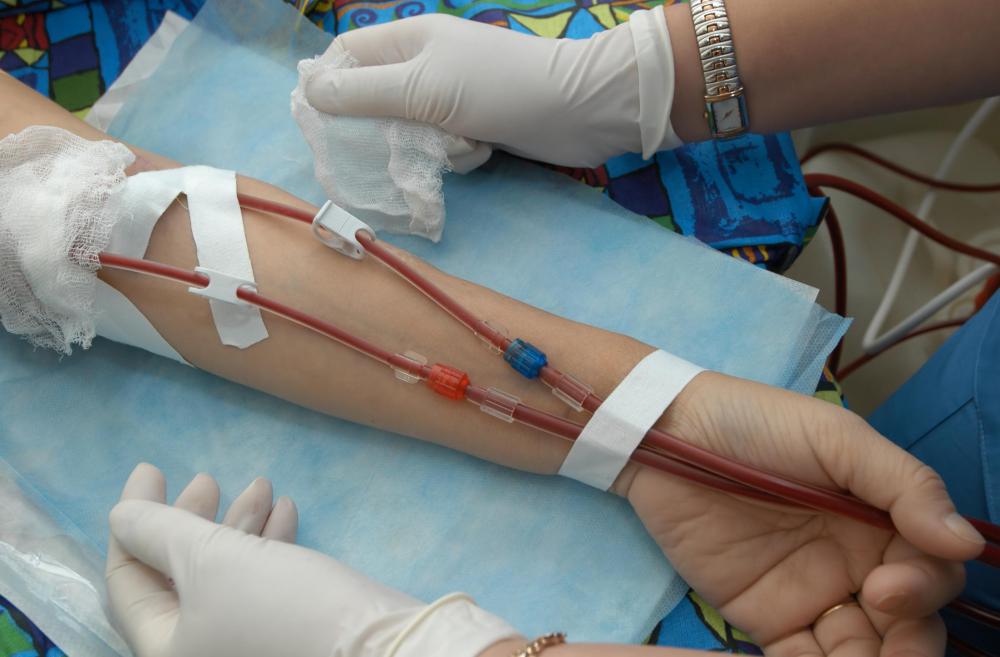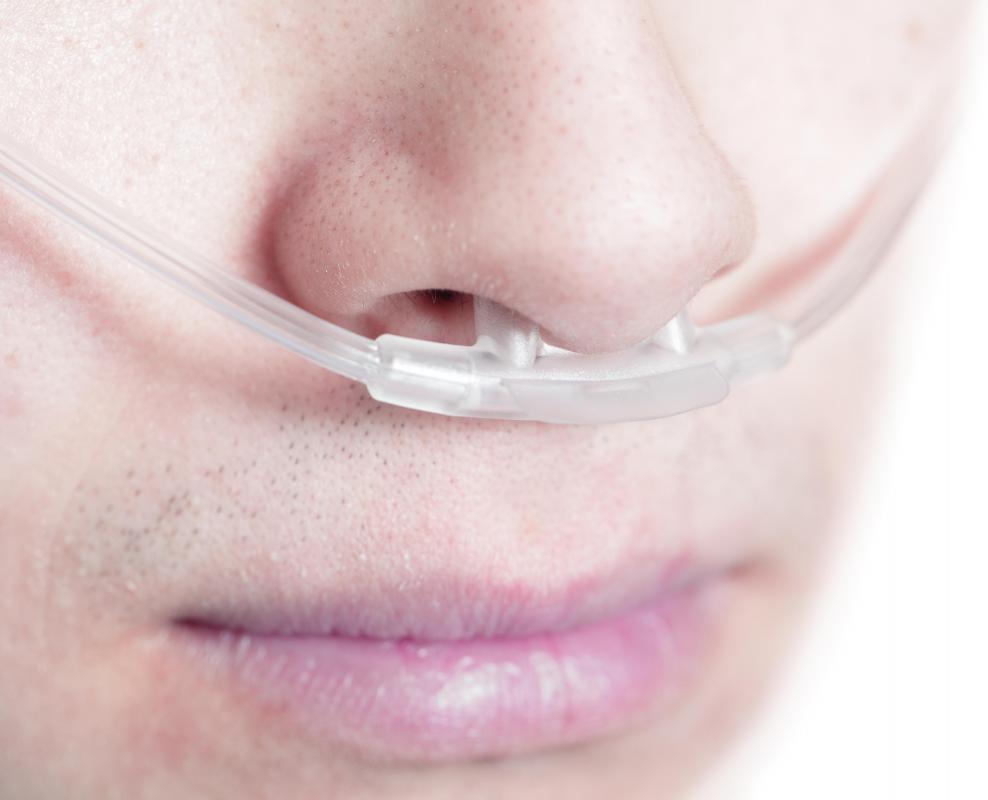At WiseGEEK, we're committed to delivering accurate, trustworthy information. Our expert-authored content is rigorously fact-checked and sourced from credible authorities. Discover how we uphold the highest standards in providing you with reliable knowledge.
What Is Respiratory Hypoxia?
Respiratory hypoxia is a medical condition that occurs when the body or a body part does not receive sufficient oxygen. There are four different types of respiratory hypoxia: hypoxic hypoxia, stagnant hypoxia, anemic hypoxia, and histotoxic hypoxia. The main causes, signs, and treatment of respiratory hypoxia depend on the type of hypoxia at hand.
Hypoxic hypoxia occurs when the lungs are unable to sufficiently saturate the blood with oxygen. This form of hypoxia may be caused by hyperventilation, deflated alveoli, or a blockage in the lung. These medical conditions may be the result of diseases such as asthma, pneumonia, or emphysema or a prolonged exposure to high altitudes. Signs of this form of respiratory hypoxia include extreme fatigue, headaches, and nausea. Oxygen concentrators, machines that supply higher than normal concentrations of oxygen to a patient, are used to treat this condition.

Stagnant hypoxia, also known as circulatory hypoxia, occurs when the circulation of the blood is not sufficient enough to deliver the required oxygen to all the tissues in the body. The primary causes of this respiratory condition are shock or an impairment of the circulatory system. Signs of this serious medical state include low blood pressure, dizziness, and chills. Treatment of this condition is to address the problem causing the circulatory problems or shock and to supplement the patient with oxygen therapy.

Anemic hypoxia occurs when the blood becomes anemic and is unable to bind oxygen. Some types of poisonings, such as carbon monoxide intoxication, interfere with the ability of the hemoglobin in the blood to lock onto oxygen, causing acute anemic hypoxia. Gradual anemic hypoxia is often caused by a hemorrhage or anemia. Symptoms of this form of respiratory hypoxia are extreme fatigue, an irregular heart rate, and dizziness.

Severe poisonings causing anemic hypoxia may be treated with a hyperbaric oxygen therapy that will force the hemoglobin to release the poison and bind to oxygen again. Less severe poisoning will be treated with oxygen therapy. Anemic hypoxia caused by hemorrhages will be treated by stopping the hemorrhage and by providing a blood transfusion. Iron supplements are used to treat mild anemia.

Histotoxic hypoxia occurs when the cells in the body are unable to metabolize the oxygen delivered by the blood. Most often caused by cyanide poisoning, the symptoms of this medical condition are very similar to the symptoms observed with hypoxic hypoxia. These signs include exhaustion, nausea, and headaches. Treatment of histotoxic hypoxia, caused by cyanide poisoning, involves using a cyanide antidote kit to neutralize the poison and a hyperbaric chamber to maximize oxygen absorption.
AS FEATURED ON:
AS FEATURED ON:


















Discussion Comments
@bear78-- I have a similar experience when I forget to take my iron supplements. I have anemia because of an iron deficiency. I never understood until now why I feel dizzy and faint when my iron levels fall too much. I guess it has to do with oxygen levels in my blood.
When I take my iron supplements regularly though, I'm absolutely fine. I guess I'm lucky that my treatment is fairly easy.
There are other blood disorders that cause low oxygen levels in the blood. I think that they are more difficult to treat.
I hyperventilated once due to an anxiety attack. It resulted in hypoxia but thankfully it didn't last long. I calmed down and my breathing returned to normal.
I had never experienced something like that before though. It was a strange feeling, as though my head is about to explode. I felt dizzy and lightheaded. And I started experiencing numbness in my hands and feet. It was scary. If my breathing hadn't slowed down, I think I would have lost consciousness.
Carbon dioxide poisoning prevents oxygen from entering the blood. So when someone dies from carbon dioxide poisoning, he or she is actually dying from respiratory hypoxia right?
Post your comments